Introduction
Sustainability isn’t just a buzzword anymore; it’s become a must-have for businesses. It’s about ensuring a better future for our planet, society, and economy. Sustainability goes beyond environmental conservation; it includes social responsibility and economic viability. In today’s market, it’s not a sideline strategy; it’s at the heart of brand identity, resonating with a growing number of conscious consumers.
Our exploration reveals that sustainability isn’t just a moral choice; it’s a smart business move. We present data, stats, and compelling case studies from around the world, showing how sustainability can boost brand reputation and profitability.
In this report, we cover topics like green marketing, circular economies, ethical supply chains, and the rise of eco-conscious consumers. These aren’t just passing trends; they define success and customer loyalty today. Our narrative is about both making brands greener and making green the new face of branding.
Get ready to dive into a story where every statistic is an eye-opener, and every case study showcases innovation. This report will be your guide to leading the green revolution and redefining branding in the 21st century. Welcome to “The Green Brand” – where profit meets sustainability.
Sustainable development is the pathway to the future we want for all. It offers a framework to generate economic growth, achieve social justice, exercise environmental stewardship, and strengthen governance.
Global Trends in Sustainability: The New Brand Imperative
These global trends paint a clear picture: the shift towards sustainability is not just a fleeting movement but a fundamental evolution in consumer expectations and governmental regulations. For brands, this signifies a pivot point where adopting sustainable practices is good for the planet and essential for remaining relevant and profitable in a rapidly changing global marketplace.

China
China’s burgeoning middle class is becoming increasingly eco-conscious. The country’s latest Five-Year Plan emphasizes a green lifestyle and eco-friendly development, showcasing the government’s commitment to sustainability. Brands in China are pivoting towards greener packaging and supply chains, with giants like Alibaba investing in sustainable logistics.

India
With a demographic poised to become the world’s largest consumer market, India’s sustainability trends are heavily influenced by governmental initiatives such as the National Action Plan on Climate Change. Indian consumers are showing a marked preference for organic products, as evidenced by the 50% annual growth reported by ASSOCHAM-EY.

Indonesia
Indonesia is confronting its environmental challenges head-on, with a significant focus on reducing ocean plastic. Brands are responding by adopting sustainable packaging solutions. The Indonesian government’s ambitious plan to reduce marine plastic debris by 70% by 2025 presents both a challenge and an opportunity for brands.

Japan
In Japan, the concept of ‘mottainai’—a sense of regret concerning waste—permeates consumer culture. Japanese companies are leading in energy-efficient technologies and practices, setting a benchmark for global brands.

Philippines
The Philippines is witnessing a green revolution, with a strong youth-led movement demanding sustainable brand practices. Legislation is also catching up, with laws being proposed to ban single-use plastics, a significant step that brands must anticipate and adapt to.

Singapore
Known for its stringent environmental policies, Singapore is championing sustainable urban living. Brands in the city-state are increasingly expected to align with the national vision of a ‘City in a Garden,’ focusing on sustainable innovations.

Thailand
Thailand’s brand landscape is increasingly being shaped by the country’s focus on bio-economies. The Thai government is promoting the use of bioplastics, and brands are incorporating sustainable materials into their product lines to meet the ‘Bio-Circular-Green’ economic model being pursued.

United Kingdom
The U.K.’s commitment to a net-zero carbon economy by 2050 is accelerating brand innovation in sustainability. British consumers are some of Europe’s most environmentally conscious, with a study by Unilever revealing that a third of consumers are now buying from brands based on their social and environmental impact.

United States
The push for sustainability is rooted deeply in consumer behavior changes. A Nielsen report highlights that 73% of U.S. millennials are willing to spend more on a product if it comes from a sustainable brand. The U.S. market is seeing a surge in renewable energy investments and a substantial rise in the circular economy, where products are designed for longevity, reuse, and eventual recycling.

Vietnam
Vietnam faces severe climate change impacts, and sustainability has become a national urgency. Brands are increasingly expected to adopt green practices, with the government incentivizing sustainable business models.
There will be more plastic than fish in the ocean by 2050 if current trends continue.
Green Luxury: Balancing Opulence and Eco-Consciousness at Marina Bay Sands
Marina Bay Sands is an iconic integrated resort in Singapore known for its luxurious facilities and distinctive architecture.
A key player in the hospitality and tourism sector, it has significantly contributed to the local economy and global recognition of Singapore.
Marina Bay Sands epitomizes the philosophy that luxury and sustainability can coexist, embedding eco-conscious practices into the very essence of its lavish offerings.

Sustainability Goals
- The goal is to reduce the resort’s carbon footprint despite business growth by reducing reliance on fossil fuels and making more effective use of materials.
- At the core of Marina Bay Sands’ identity is a longstanding dedication to sustainability, permeating its architecture, design, and operations, all bolstered by significant investment in smart building management systems.
Approach & Strategy
- A US$1 billion reinvestment program underscored the integration of sustainability into enhancing guest experiences while addressing environmental concerns.
Initiatives and Innovations
- Energy Efficiency: 581 hotel rooms were renovated to include Room Control Units (RCUs), optimizing energy use for guest comfort.
- Water Stewardship: Upgraded dishwashers in high-usage restaurants to models saving 140,000kWh and over 1.7 million liters of water annually.
- Recycling & Circularity: Implemented a food waste segregation system, improved by an extensive bin inventory study and process enhancements.

Stakeholder Engagement
- Social Impact: Launched a US$1 million Sands Hospitality Scholarship for local students in partnership with six Institutes of Higher Learning.
- Sustainable Food: Worked with WWF Singapore to transform seafood supply chains, supporting sustainable farming and responsible sourcing.
Execution Implementation Process
- Engaged external consultants for infrastructural and technological enhancements in waste management.
- Strategic enhancements, like color-coded bins, were introduced for better waste segregation.
Challenges & Solutions
- Balancing luxury guest experiences with sustainability led to the adoption of smart technologies that cater to both needs efficiently.
- Effective water stewardship in high-consumption facilities requires careful selection and implementation of cutting-edge dishwasher technology.
Impact & Outcomes Quantifiable Results
- Since 2012, Marina Bay Sands has effectively uncoupled economic growth from carbon emissions, achieving a reduction of over 40% in its carbon footprint.
- Achieved significant energy and water savings by adopting smart technology in renovated rooms and restaurant operations.
- Enhanced waste management, resulting in better food waste segregation and treatment.

Qualitative Benefits
- Cemented reputation as a leader in sustainable hospitality.
- Fostered a culture of sustainability among employees and guests, enhancing the brand’s community engagement and corporate image.
Awards & Recognition
- The Sands Expo and Convention Centre became a triple platinum-certified sustainable venue, showcasing its commitment to sustainability in the MICE industry.
Lessons Learned & Future Plans Insights & Reflections
- Integrating smart technologies has demonstrated that guest comfort and energy efficiency can go hand-in-hand.
- The commitment to community and environmental stewardship has strengthened the workforce and attracted eco-conscious guests.
Forward-looking Strategies
- Continual improvement of waste management systems to achieve higher levels of sustainability.
- Expansion of the partnership with WWF to further enhance responsible sourcing and support more farms towards ASC certification.

The Role of Sustainability in Branding: Beyond the Green Facade
Sustainability has morphed into a potent brand asset, a lens through which consumers evaluate the authenticity and longevity of a brand.
The influence of sustainability on brand value is undeniable. Brands that integrate sustainability into their core values often see a bolstered brand image that resonates with values-driven consumers.
3X
In 10 years, purpose-driven companies witnessed three times the market growth compared to their competitors.
For instance, a brand that showcases a reduction in carbon footprint or demonstrates a zero-waste manufacturing process can attract customers and command a premium on its products.
66%
of global consumers are willing to pay more for sustainable goods, a number that jumps to 73% among millennials.
Sustainable branding also serves as a competitive edge. Brands like Patagonia, which back their environmental advocacy with action, have forged a deep connection with consumers, leading to loyal customer bases and enhanced brand equity. In contrast, brands that fail to act sustainably risk losing market share to more environmentally conscious competitors.
42%
of how people feel about a company is based on their perceptions of the firm’s corporate social responsibility (CSR).
However, there is a caveat—greenwashing, the practice of making misleading claims about the environmental benefits of a product, service, or technology, can tarnish a brand’s reputation irreparably. In an age where information is readily accessible, consumers are increasingly savvy about investigating the veracity of a brand’s claims. The Competition and Markets Authority (CMA) in the U.K. has gone as far as releasing a Green Claims Code to help prevent greenwashing and protect consumer trust.
The pursuit of sustainability must be genuine and deeply ingrained within the brand’s strategic initiatives. Half-hearted attempts or misleading claims can do more damage than good to a brand’s image. When sustainability is adopted as a true brand ethos and not just a marketing tactic, it can enhance brand perception, drive customer loyalty, and create a meaningful competitive advantage.
In the future, the only companies that will be sustainable are those that have learned to create value with less impact.
Benefits of Sustainable Branding: Building a Lasting Legacy
Sustainable branding is not just a moral imperative or a compliance requirement; it is a strategic lever that can yield many benefits for brands that authentically integrate it into their business practices.
Sustainable branding is not just a moral imperative or a compliance requirement; it is a strategic lever that can yield many benefits for brands that authentically integrate it into their business practices.
Sustainable branding offers a plethora of advantages that extend beyond the realm of public relations. It touches upon every aspect of the business, from cost savings and innovation to risk management and consumer trust. Brands that seize the opportunity to weave sustainability into their fabric are poised to thrive in today’s conscientious market and shape a legacy that resonates with all stakeholders.
Enhanced Reputation
Sustainability efforts directly contribute to a brand’s reputation. According to the RepTrak study, companies with a high-reputation score experienced up to 2.6 times more support from consumers. A brand associated with sustainability often enjoys a halo effect, where the goodwill generated from being environmentally conscious elevates the brand’s overall reputation across all touchpoints.
Increased Customer Loyalty and Trust
A brand’s commitment to sustainable practices often results in deeper customer loyalty. Trust is a crucial driver for consumer purchase decisions, and sustainability is a significant factor in establishing this trust. Customers are more likely to stay committed to brands that align with their personal values, and in many cases, sustainability ranks high on their list of priorities.
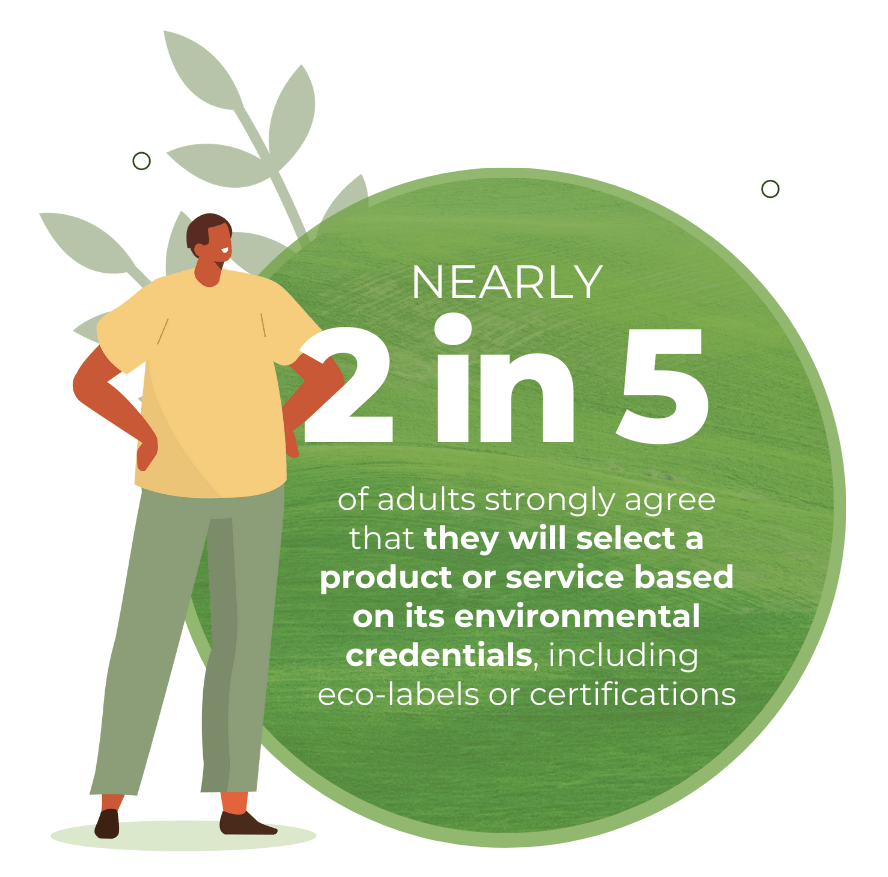
Operational Efficiencies
Sustainable branding can lead to operational efficiencies that reduce costs over time. By implementing eco-friendly practices and reducing waste, brands can achieve leaner operations. The Journal of Marketing found that sustainable practices could reduce costs by up to 16%, making a strong case for sustainability from a financial standpoint.
Innovation and Competitive Advantage
Sustainability can be a catalyst for innovation. Brands dedicated to sustainability are often the first to explore new materials, processes, and technologies to minimize their environmental impact. This can lead to unique products and services that differentiate the brand in the marketplace, giving it a competitive advantage.
Attracting Talent and Employee Engagement
Sustainability also has an internal benefit. A study from IBM found that 71% of employees and job seekers say environmentally sustainable companies are more attractive employers. Moreover, employees who work for sustainability-conscious companies are typically more engaged, motivated, and productive.
Access to Capital and Favorable Investment
Sustainable brands are attractive to investors. The rise of environmental, social, and governance (ESG) criteria has meant that brands with strong sustainability credentials are more likely to attract investment. According to Morningstar, sustainable funds attracted new assets at a record pace in 2019, with a 23% increase from the previous year.
Resilience to Regulatory Changes
Sustainable brands are better prepared for regulatory changes. Governments worldwide are imposing stricter environmental regulations, and brands that have embraced sustainability are well-positioned to adapt to these changes with minimal disruption.
Risk Management
Sustainable branding helps manage risks, particularly those associated with climate change and resource scarcity. Brands that anticipate and respond to these risks can safeguard their supply chains and operations against future disruptions.
There are no jobs on a dead planet.
Understanding Consumer Preferences through Research
Understanding the preferences and expectations of customers is paramount for brands to integrate sustainability into their value proposition successfully.
Market Research on Sustainability
The cornerstone of grasping consumer sentiment is thorough market research. By commissioning bespoke studies or analyzing extant data, brands can gauge the sustainability pulse of their audience. This research should encompass:
Surveys and Questionnaires: Design and distribute surveys that probe consumer values, preferences, and willingness to pay for sustainable products. These tools can uncover insights into the sustainability factors that sway purchasing decisions.
Focus Groups: Convene groups representing your target market to engage in in-depth discussions about sustainability. These sessions can reveal nuanced consumer attitudes and the underlying reasons behind them.
Consumer Behavior Analysis: Employ analytics to study buying patterns and trends. This could involve tracking sales data relative to sustainability claims, online engagement metrics for eco-friendly initiatives, or social media sentiment analysis regarding sustainability topics.
Ethnographic Studies: Observe consumers in their natural environment to see how sustainability factors into their lifestyle. This could include shopping habits, product usage, and disposal practices.
Segmentation Analysis
Diverse consumer bases necessitate a segmented approach to market sustainability. Brands should utilize segmentation analysis to discern which sustainability features are most important to different groups:
Demographic Segmentation: Examine how different age groups, income levels, and educational backgrounds affect preferences for sustainable products.
Psychographic Segmentation: Investigate how consumers’ values, attitudes, lifestyles, and social consciousness influence their sustainability choices.
Behavioral Segmentation: Understand how the frequency of purchase, brand loyalty, and benefits sought vary in relation to sustainable products across different consumer segments.
Geographic Segmentation: Consider the regional differences in sustainability preferences, as environmental concerns may vary significantly by location due to cultural, economic, and regulatory factors.
Sustainable agricultural practices have the potential to increase global crop yields up to 58% while reducing the environmental impact.
Baidu's AI: Shaping a Green Tech Revolution for a Sustainable Tomorrow
Baidu is the dominant internet search engine company in China. Its features and services are similar to Google’s, but it focuses on China, where it controls most of the search market.
Baidu, Inc. is a paragon in the AI and internet technology sectors, based in China, celebrated for revolutionizing the online world since its inception in 2000.
Baidu’s vision encapsulates the transformative power of AI and internet technology, streamlining complexities for a global audience and driving toward a sustainable, technology-integrated future.
As a NASDAQ and HKEX-listed entity, Baidu has become synonymous with pioneering AI innovation and harnessing technology to simplify the complexities of the modern world.
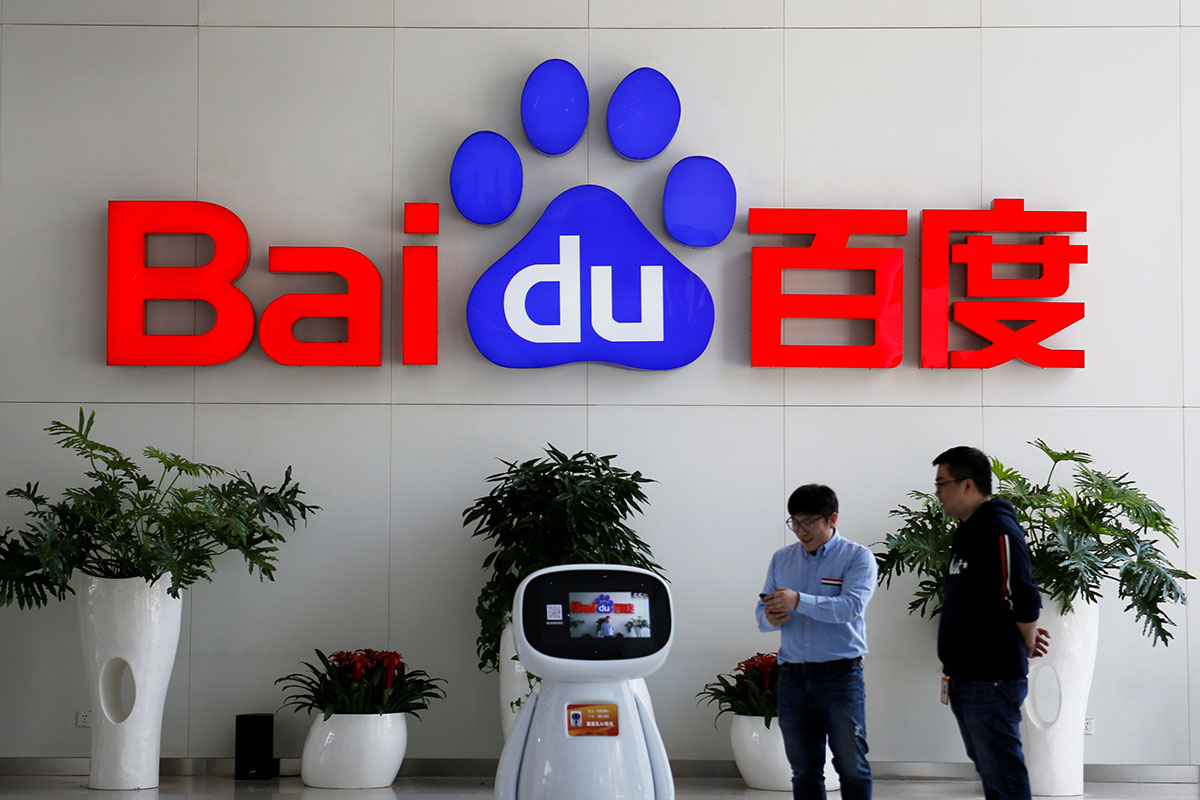
Sustainability Goals
- Baidu is unwavering in its commitment to fostering sustainable societal changes, employing green AI technologies to unearth new opportunities for social advancement.
Approach & Strategy
- Adherence to AI Ethics: Baidu upholds stringent ethical standards for AI, prioritizing safety, equality in technology access, empowerment of humanity, and the enhancement of human freedom and possibilities.
- Promotion of Green Mobility: Through strategic partnerships and research, Baidu aims to integrate AI into transport to reduce carbon emissions significantly.
- Innovation in Cloud Services: The company is spearheading the transition to green power in its data centers, aiming for 100% renewable energy utilization to deliver clean cloud services.
Initiatives and Innovations
- Vehicle-Road Collaboration (V2R): Baidu's V2R infrastructure initiatives in autonomous zones have shown carbon reduction impacts equivalent to planting half a million trees.
- Apollo Go: As the world's largest autonomous ride-hailing service, Apollo Go is an example of Baidu's leadership in applying autonomous driving technology to new energy vehicles (NEVs), focusing on energy conservation.
- Green Power Data Centers: Contracted 1 billion kWh of green power for data centers to advance toward entirely renewable energy sources.
Stakeholder Engagement
- AI Safety and Ethics Standards: Actively contributes to nearly 100 AI safety and ethics standards, influencing a broad spectrum of technologies.
- Community and Education: Trained over 3 million AI talents through academic partnerships, pushing towards a goal of 5 million trained AI experts.
Implementation Process
- ERNIE Big Model: Baidu's proprietary big model replaces traditional data classification methods for better data security governance.
- Diversity in the Workplace: Initiatives for enhancing diversity have resulted in a management team where female representation exceeds the industry average.
Challenges & Solutions
- Privacy and Security: Baidu emphasizes the protection of privacy, utilizing advanced AI to fortify data management and security effectively.

Impact & Outcomes
Quantifiable Results
- Over 2 million orders on the Apollo Go platform illustrate the scale and impact of Baidu’s green mobility efforts.
- The energy transition in data centers indicates Baidu’s concrete steps toward sustainability in tech operations.
Qualitative Benefits
- Notable progress in AI ethics and green tech places Baidu as a leader in responsible AI development and deployment.
- The company’s initiatives contribute to societal benefits by reducing environmental impact and promoting inclusive technology education and workplace diversity.
Awards & Recognition
- As Baidu continues positively impacting the ESG domain, it remains a beacon for innovation. The company won the only Chinese Patent Gold Award in AI interaction, making Baidu the high-tech company with the most Chinese patent awards and the highest award level in AI.
Insights & Reflections
- Baidu's journey reiterates that technological progress and ethical governance can advance in tandem.
- The proactive approach to talent development and green initiatives reflects a deep understanding of corporate responsibility in the tech industry.
Forward-looking Strategies
- Continuing to push the envelope in AI ethics, Baidu is set on reaching its ambitious goal of training 5 million AI talents.
- The company's ongoing green mobility and energy conservation endeavors forecast a future where technology and sustainability are inseparably interwoven.

Attitudes about Green Brands by Generation
Sustainability holds varying degrees of importance across different audience segments, primarily influenced by generational values and experiences. Here’s a general overview of how different generations view sustainability:

Generation Z (Born 1997-2012):
Gen Z is often cited as the most sustainability-conscious generation. They have been raised during a time of heightened awareness of environmental issues and are known for their values-driven purchasing behavior. According to a recent survey, nearly a third of Gen Z respondents mentioned they have stopped purchasing from brands with ethical or sustainability-related concerns. They are also likely to influence household purchases with a strong preference for environmentally friendly or socially responsible brands.

Millennials (Born 1981-1996):
Millennials are considered the pioneers in prioritizing sustainability as consumers, with many willing to pay extra for sustainable offerings. A Nielsen report found that 73% of surveyed millennials were willing to spend more on a product if it comes from a sustainable brand.

Generation X (Born 1965-1980):
Gen Xers are generally pragmatic and financially minded. They are interested in sustainability, especially concerning the future well-being of their children. However, their sustainable actions may focus more on long-term financial savings, such as energy efficiency, rather than purely environmental concerns.

Baby Boomers (Born 1946-1964):
Boomers have witnessed the evolution of the environmental movement and may have participated in its early stages. They tend to have a strong sense of brand loyalty and are likely to support brands they feel are honest and trustworthy. As reported in a recent Forbes article on sustainability, Boomers are interested in sustainable products but are less likely to pay a premium than younger generations.
Other Factors Affecting Green Attitudes and Buying Behaviors
Attitudes towards sustainability vary greatly within generational cohorts based on factors such as geographic location, level of education, and socioeconomic status.
Urban and City Dwellers: People living in urban areas or cities are often more exposed to sustainability initiatives, such as recycling programs or public transportation options. A study by the American Psychological Association found that city residents might have a higher propensity to engage in sustainable behaviors due to better access to resources and information.
Rural Residents: Those in rural areas may prioritize sustainability differently, often focusing on land conservation and practical resource management. A United Nations report noted that rural sustainability efforts are often tied to agricultural practices and maintaining biodiversity.
Higher Education Levels: Generally, higher education levels correlate with a greater awareness of environmental issues and a willingness to act upon them. The World Bank’s Development and Climate Change report suggested that education contributes to a better understanding of the complexities of sustainability and can lead to more environmentally friendly behaviors.
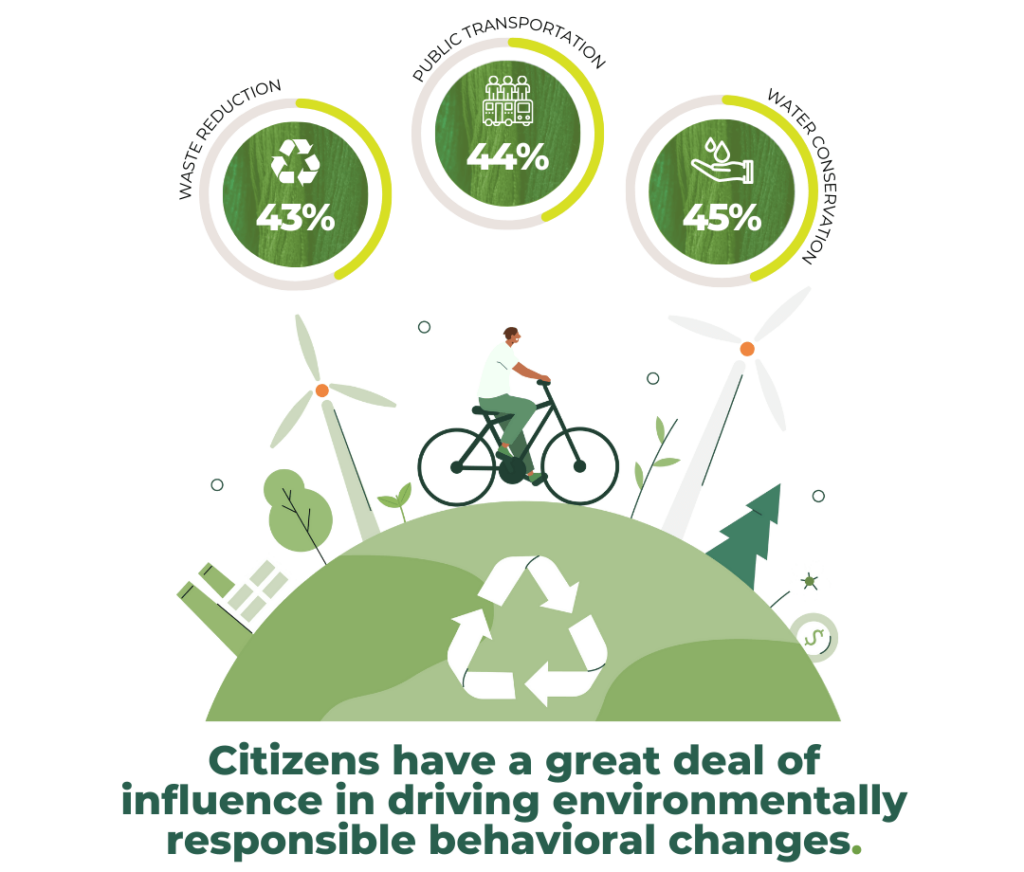
Lower Education Levels: Individuals with lower education levels may have less exposure to information about sustainability and may prioritize immediate economic concerns over environmental ones.
Higher Socioeconomic Status: People with higher incomes often can afford sustainable products, which tend to be more expensive. A Journal of Consumer Affairs article found that higher-income households are more likely to engage in a variety of environmental behaviors, from purchasing green products to participating in energy-saving activities.
Lower Socioeconomic Status: Those with lower incomes might be less likely to afford the premium for sustainable products, even if they place value on sustainability. However, they might engage in sustainable behaviors out of necessity, such as repairing instead of replacing items or using less energy to save money.
Sustainable development is development that meets the needs of the present without compromising the ability of future generations to meet their own needs.
Commercial Viability and Sustainability
Integrating sustainability into business operations is not just an ethical imperative but a commercial one. By conducting thorough cost-benefit analyses, innovating new revenue streams, and mitigating risks, brands can ensure their sustainable practices contribute to their profitability and longevity.
Cost-Benefit Analysis
A methodical cost-benefit analysis (CBA) is essential for assessing the financial viability of sustainability initiatives. Brands should consider the following when conducting a CBA:
Long-Term Cost Savings: Evaluate the long-term operational cost savings from energy-efficient systems, waste reduction, and sustainable materials against short-term implementation costs.
Investment Recovery Periods: Determine the payback period for sustainable investments, considering both tangible and intangible returns.
Lifecycle Analysis: Conduct a full lifecycle analysis of products to identify sustainability improvements that reduce costs throughout the product lifecycle.
Incentives and Subsidies: Factor in governmental incentives, subsidies, and tax breaks available for sustainable practices, which can significantly offset initial costs.
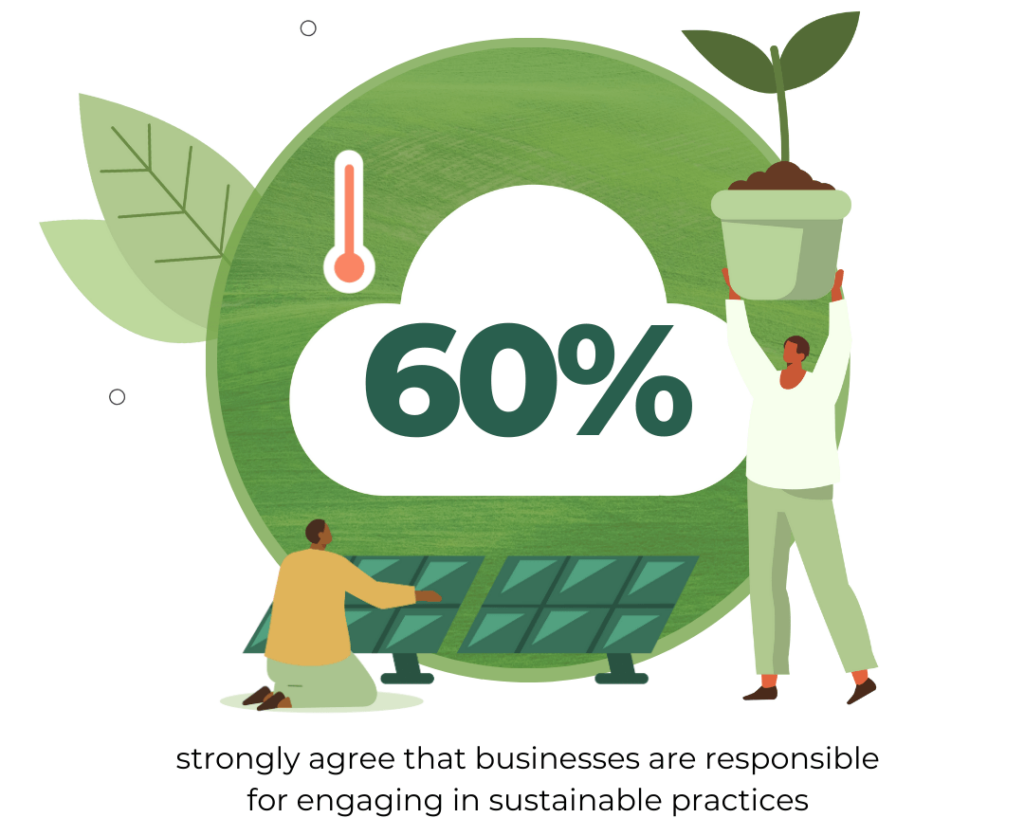
Revenue Streams from Sustainable Practices
Sustainability is not merely a cost to be managed but a driver of innovation and revenue. Brands can capitalize on sustainability through:
Circular Economy Models: Develop products and services designed for the circular economy, which can be repaired, reused, or recycled, thus creating value from what was previously considered waste.
Sustainable Product Lines: Introduce sustainable product lines that can command premium pricing and attract environmentally conscious consumers.
Waste-to-Resource Programs: Implement programs to repurpose waste materials into new products or raw materials, creating an internal loop of resources that can generate additional income.
Risk Mitigation
Sustainable practices serve as a hedge against a variety of risks:
Regulatory Compliance: Stay ahead of the regulatory curve by adopting sustainability standards early, reducing the risk of non-compliance with current and future environmental legislation.
Supply Chain Resilience: Build more resilient supply chains through diversification and by investing in sustainable sourcing, which can be less susceptible to global disruptions.
Reputational Management: Proactively address the growing consumer scrutiny by embedding sustainability into brand identity, thus safeguarding against reputational damage that can arise from environmental or social negligence.
Sustainability Served: Beyond Meat's Journey in Redefining Food Production
Beyond Meat stands as a vanguard in the food industry. Established in 2009 in the USA, it is renowned for its innovative approach to protein.
Beyond Meat’s philosophy encapsulates a commitment to innovation, sustainability, and health, leveraging plant-based proteins to forge a more sustainable food system that benefits the planet and its inhabitants.
The company fervently advocates for plant-based proteins, aiming to shift the global food paradigm to improve health, the environment, and society.
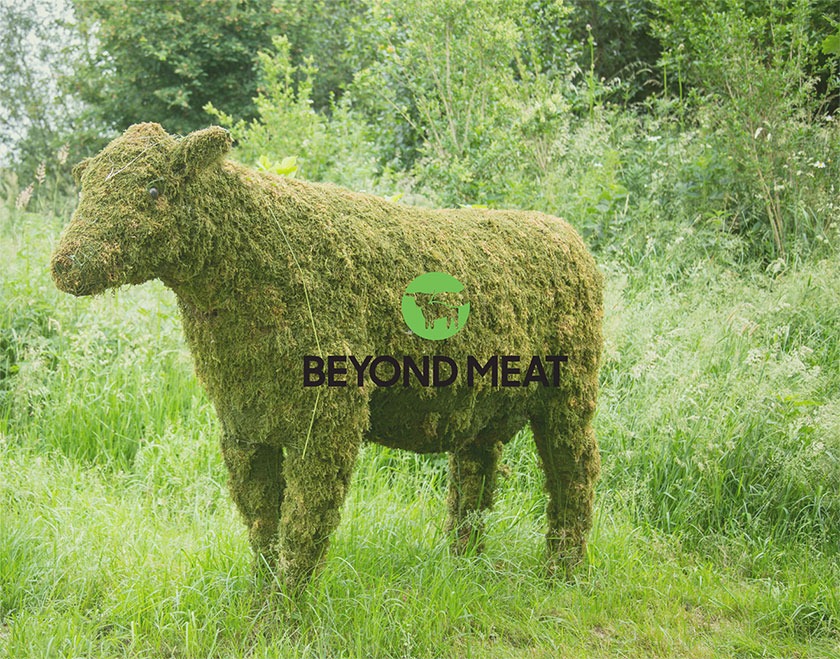
Sustainability Goals
- Beyond Meat is dedicated to driving the world toward a sustainable, decarbonized future by leading the global transition to plant-based proteins.
Approach & Strategy
- Commitment to Health and Environment: The brand’s strategy revolves around offering products free from GMOs, hormones, and antibiotics, thus promoting a healthier and more sustainable dietary choice.
- Product Innovation: Beyond Meat's product development is deeply rooted in its mission to provide nutritious, plant-based alternatives indistinguishable in taste and superior in sustainability to animal proteins.
Initiatives and Innovations
- Environmental Impact: The creation of a Beyond Burger significantly reduces the utilization of water, land, and energy while also decreasing greenhouse gas emissions when compared to producing a traditional beef burger.
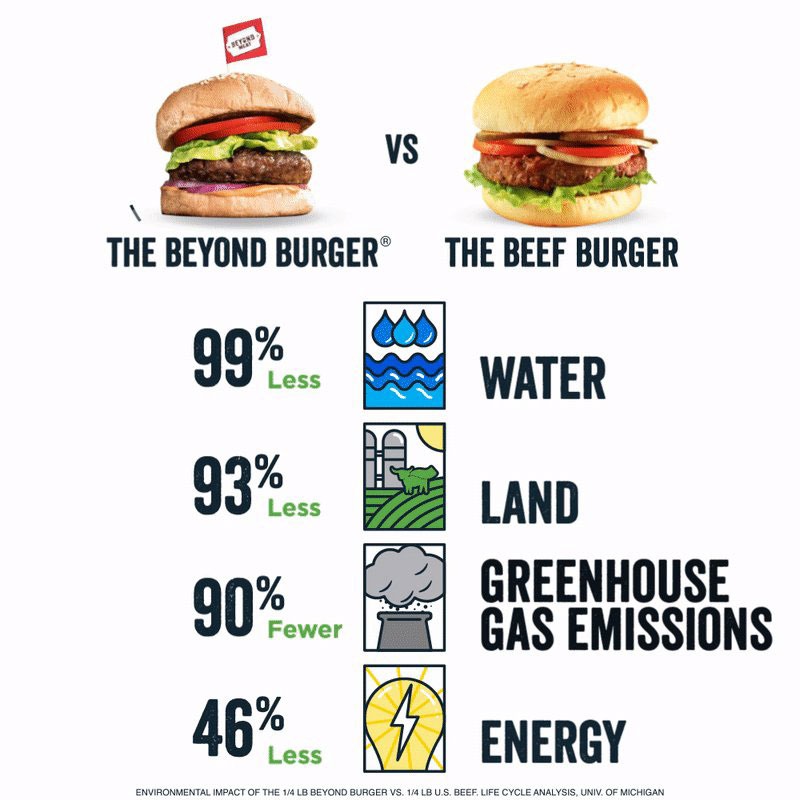
Stakeholder Engagement
- Supplier Collaboration: Prioritizes sourcing ingredients from suppliers aligned with their value system, ensuring a cohesive ESG strategy.
- Consumer Education: Encourages consumers to recognize the individual impact of choosing plant-based options through its messaging and product accessibility.
Implementation Process
- Product Availability: Beyond Meat's plant-based proteins are widely accessible, allowing for an easy transition for consumers aiming to make a dietary change.
- ESG Integration: The company has integrated ESG into the core of its operations, with ongoing investments across the business spectrum.
Challenges & Solutions
- Consumer Preferences: Addressing the challenge of taste and dietary habit changes by offering products that closely mimic the taste and texture of animal meats.
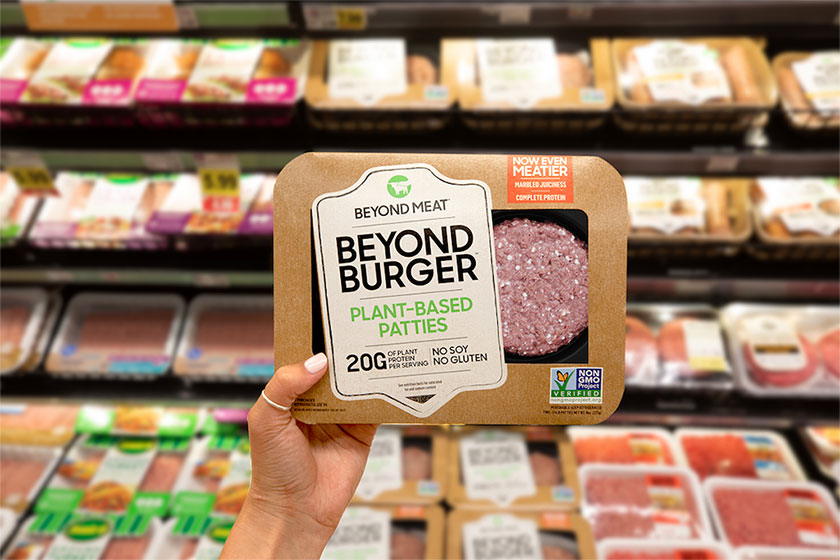
Impact & Outcomes
Quantifiable Results
- A Beyond Burger offers a significantly lower environmental footprint than conventional beef burgers, a substantial step towards sustainable consumption.
Qualitative Benefits
- The move towards plant-based proteins reflects a growing global consciousness around health, natural resource conservation, and ethical considerations regarding animal welfare.
Awards & Recognition
- Beyond Meat's innovative approach has garnered attention, and along with its competitor, Impossible Foods, it has been honored as the UN Environment's “Champions of the Earth.”
Lessons Learned & Future Plans
Insights & Reflections
- The company's journey highlights the importance of mission-driven business practices and the potential impact of consumer choices on global issues.
- Aligning product development with ESG goals has proven critical for Beyond Meat's success and industry influence.
Forward-looking Strategies
- Beyond Meat anticipates establishing comprehensive 2030 ESG goals, reinforcing its social responsibility and environmental sustainability commitment.

Strategic Integration of Sustainability
Embedding sustainability into the core business strategy is critical for brands seeking long-term growth and resilience. By strategically integrating sustainability with business goals and allowing it to drive innovation, brands contribute to a healthier planet and position themselves competitively in a market that increasingly values responsible business practices. The strategic integration of sustainability is not just a moral choice but a business imperative that unlocks new opportunities and ensures enduring success.
Aligning Sustainability with Business Goals
To ensure sustainability is not siloed as a mere CSR initiative, it should be woven into the fabric of a company’s strategic objectives:
Mission and Vision Integration: Redefine the company’s mission and vision to reflect a commitment to sustainability, ensuring it becomes a guiding principle for all strategic decisions.
Performance Metrics: Develop sustainability performance metrics aligning with key business objectives, ensuring that sustainability drives progress toward financial and market goals.
Executive Engagement: Involve C-level executives in sustainability initiatives to reinforce its strategic importance and ensure it receives the necessary resources and attention.
Employee Incentives: Align employee incentives and KPIs with sustainability outcomes to encourage behaviors that support the company’s strategic objectives.
Sustainability as an Innovation Driver
Sustainability challenges can become the impetus for innovation in various aspects of business:
Product Development: Leverage sustainable design principles to create new, eco-friendly products or to redesign existing products to reduce environmental impact.
Operational Efficiency: Use sustainability as a lens to reimagine operational processes, leading to increased efficiency and reduced waste.
Business Model Innovation: Explore business models prioritizing resource efficiency, durability, and end-of-life recyclability, such as product-as-a-service models.
Supply Chain Transformation: Innovate within the supply chain by partnering with suppliers on sustainable practices, potentially reducing costs and improving supply chain agility.
Technology Utilization: Employ cutting-edge technologies like AI and IoT to optimize resource use and reduce emissions, turning data insights into sustainable outcomes.
The World Bank reports that high-income countries generate about 34% of the world’s waste despite only having 16% of the world’s population. Recycling rates in these countries vary significantly, with some European countries recycling more than 50% of waste while the global average remains below 20%.
Benchmarks and Performance Metrics
Quantifying sustainability efforts is essential for tracking performance, setting goals, and communicating progress internally and externally. By establishing clear benchmarks and performance metrics, brands can create transparency around their sustainability efforts, foster continuous improvement, and build trust with consumers and investors.
Industry Benchmarks
Carbon Footprint: Compare the company’s carbon emissions with industry averages and with leaders in the sector. For example, a technology company might measure its data centers’ PUE (Power Usage Effectiveness) against the industry standard.
Energy Efficiency: Measure energy consumption per unit of output against benchmarks. For instance, a manufacturing company might track kWh per product unit and compare this with industry data published by agencies like the International Energy Agency (IEA).

Water Usage: Assess water usage in operations compared to industry benchmarks, which can often be found in sector-specific sustainability reports or databases.
Waste Management: Evaluate waste production and recycling rates against industry norms or leaders, using benchmarks from waste reduction initiatives or environmental agencies.
Performance Metrics
Sustainability Index Score: Utilize tools like the Dow Jones Sustainability Indices (DJSI) to assess performance compared to the world’s largest companies in terms of economic, environmental, and social criteria.
Global Reporting Initiative (GRI) Standards: Adhere to the GRI standards for sustainability reporting to measure and communicate economic, environmental, and social impacts.
UN Sustainable Development Goals (SDGs) Alignment: Align company goals with specific SDGs and measure progress against these widely recognized global targets.
Certifications and Ratings: Attain and maintain industry-specific certifications (e.g., LEED, ENERGY STAR, Fair Trade) and use the criteria within these standards as performance metrics.Lifecycle Assessment (LCA): Conduct LCAs for products to measure the environmental impact throughout the product’s lifecycle and compare it with industry products.
Measuring Success
Reduction Targets: Set and track reduction targets for emissions, water, waste, and energy usage, ensuring they are SMART (Specific, Measurable, Achievable, Relevant, Time-bound).
Return on Sustainability Investment (ROSI): Calculate the financial returns from sustainability investments, considering cost savings, revenue increases, and brand value improvements.
Stakeholder Engagement Metrics: Track the level of engagement and feedback from stakeholders on sustainability initiatives using surveys and social media analytics.
Innovation KPIs: Measure the number of new products or services developed with sustainability as a core component or the percentage of revenue from sustainable products.
The value at risk of global manageable assets due to climate change is between $4.2 trillion and $43 trillion between now and the end of the century.
Future-Oriented Perspectives
Staying informed about emerging technologies and regulatory trends is not just about compliance; it’s about positioning a brand as a leader in sustainability. By adopting future-oriented perspectives, brands can anticipate changes, innovate proactively, and maintain competitive advantage in a market where sustainability is becoming the norm.
Emerging Technologies in Sustainability
Blockchain for Transparency: Blockchain technology is revolutionizing supply chain management. By providing an immutable ledger, it offers unparalleled transparency and traceability for the sourcing of materials. Companies like De Beers are employing blockchain to trace the journey of diamonds from the mine to the customer, ensuring ethical standards.
Artificial Intelligence (AI) and Machine Learning: AI is being leveraged for predictive analytics in energy consumption, optimizing processes to be more energy-efficient, and reducing waste. Google’s use of AI to optimize cooling in data centers, which reduced energy usage by 40%, is a prime example.
Internet of Things (IoT): IoT devices are used to monitor and improve resource efficiency, from smart meters in homes to sensors in industrial equipment. For instance, the agriculture industry uses IoT sensors for precision farming, which helps conserve water and reduce chemical use.
Biotechnology in Materials: Biotech enables the development of sustainable materials, like bio-based plastics and leather alternatives, that reduce environmental impact. Companies like Modern Meadow are creating biofabricated leather without animal skins.
Renewable Energy Technologies: Advances in solar, wind, and battery storage technologies are making renewable energy more efficient and affordable, enabling brands to transition away from fossil fuels.
Regulatory Forecasting
Anticipating Environmental Legislation: Brands must stay informed about potential legislative changes, such as carbon pricing or single-use plastic bans, which could impact operations and cost structures. Tools like scenario analysis can help companies prepare for different regulatory futures.
Influencing Policy Developments: Engaging with policymakers and participating in industry associations can allow companies to influence the development of regulations in a way that supports sustainable innovation.
Adapting to International Standards: As global markets move towards standardizing sustainability practices, brands should prepare to meet international standards like the Paris Agreement targets and the EU’s Green Deal.
Compliance with Reporting Requirements: Future regulations may require more comprehensive sustainability reporting. Brands should invest in systems and processes that can handle increased reporting needs, such as the European Union’s Non-Financial Reporting Directive (NFRD).
Eco-labeling and Product Declarations: Brands should prepare for future regulations on product labeling, which may require detailed environmental impact declarations, similar to nutritional information on food products.
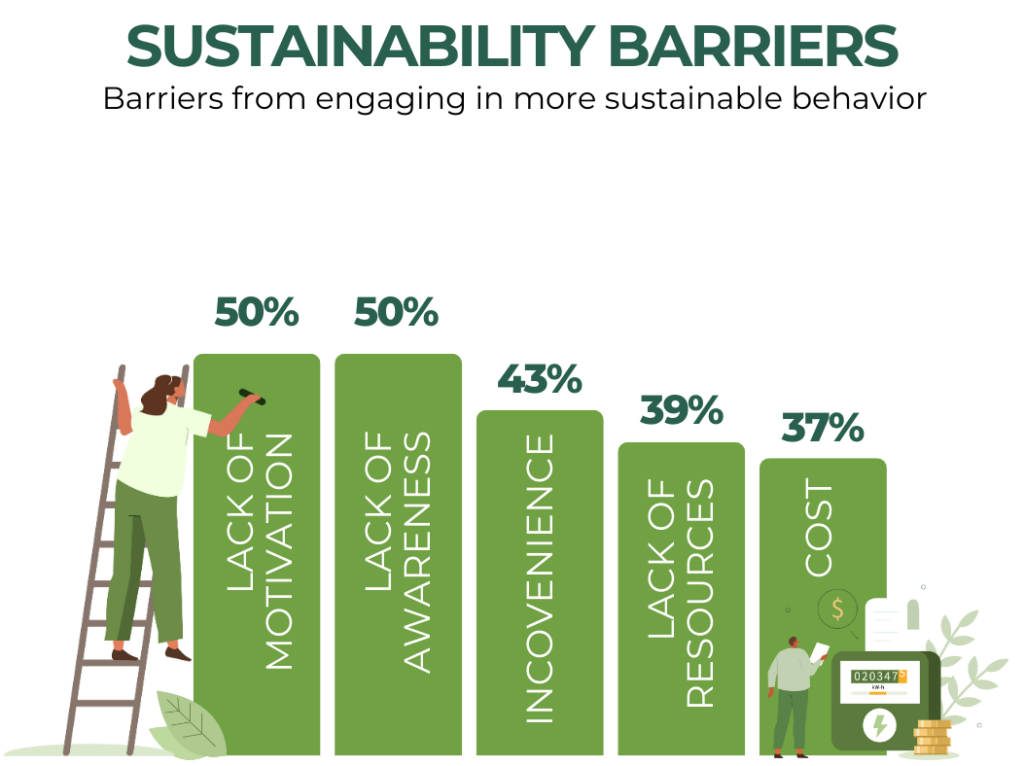
No Nasties – A Trailblazer in Sustainable Fashion
No Nasties, established in 2011, is an Indian sustainable clothing brand recognized for its commitment to environmental and ethical practices. Pioneering in the field of eco-friendly fashion, No Nasties focuses on producing 100% organic, fair trade, and vegan apparel. The brand’s operations align with the rising consumer demand for sustainable and ethically produced clothing, positioning it as a relevant and pioneering entity in the sustainable fashion industry.
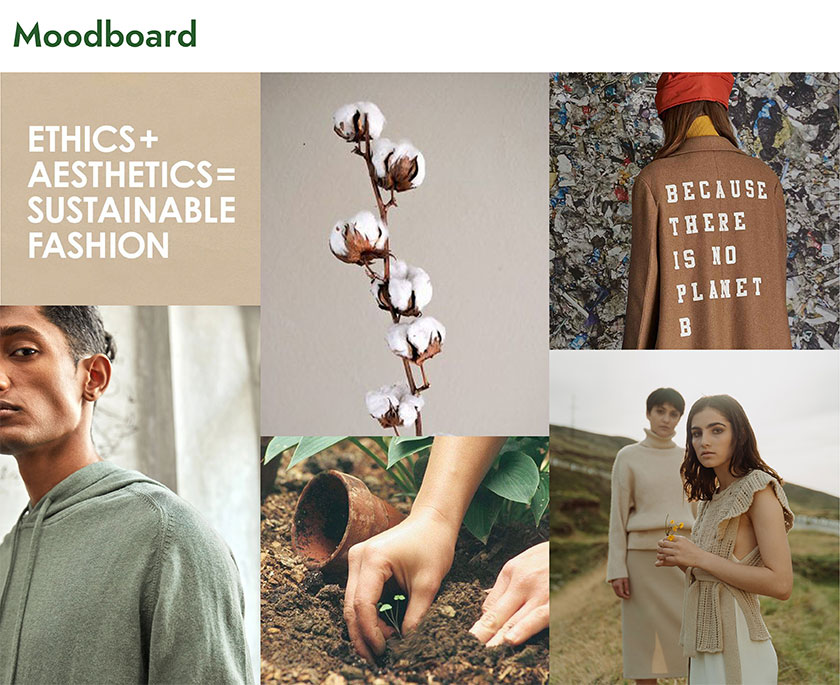
Sustainability Goals
No Nasties, established in 2011, is an Indian sustainable clothing brand recognized for its commitment to environmental and ethical practices. Pioneering in the field of eco-friendly fashion, No Nasties focuses on producing 100% organic, fair trade, and vegan apparel. The brand’s operations align with the rising consumer demand for sustainable and ethically produced clothing, positioning it as a relevant and pioneering entity in the sustainable fashion industry.
Approach & Strategy
The brand’s strategy encompasses several vital principles: using 100% organic cotton to save water and reduce emissions, maintaining a 100% local supply chain to cut carbon miles, and adopting vegan practices. Furthermore, they implement a zero-waste approach using overstock fabrics and a circular fashion model.
Initiatives and Innovations
No Nasties has introduced several innovative practices:
- Compostable Packaging: Transitioning to recycled, recyclable, and compostable packaging materials.
- Renewable Energy Use: Integrating solar and wind energy into their operations.
- Circular Closet System: Encouraging customers to resell, refresh, or re-incarnate their No Nasties clothing.
- Carbon Footprint Measurement: Partnering with Green Story for third-party Life Cycle Analysis to quantify their environmental impact.
Stakeholder Engagement
No Nasties collaborates with various stakeholders for impactful sustainability, including customers, suppliers, and local communities. This engagement is evident in their tree-planting initiatives with global partners and in encouraging customer participation in their circular fashion model.
Execution
Implementation Process
The brand measures the carbon footprint of its products at various stages – from raw material sourcing to the final product reaching the consumer. Subsequently, they compensate for this footprint by investing in solar power, wind energy, forest protection, and replanting projects.
Challenges & Solutions
Challenges primarily relate to the higher costs associated with sustainable practices. No Nasties addresses this by absorbing these costs into their profit margins instead of transferring them to customers, thereby maintaining affordability.

Impact & Outcomes
Quantifiable Results
- Environmental Impact: As of the latest data, No Nasties has planted 128,650 trees and offset 1,509,898 pounds of carbon.
- Carbon-Neutral Shipping: Achieved by investing in offset projects.
Qualitative Benefits
- The brand has witnessed enhanced reputation and customer loyalty due to its transparent and impactful sustainability efforts.
Awards & Recognition
India’s first Fairtrade-certified apparel brand and one of the oldest (if not the oldest) vegan clothing brands.
Lessons Learned & Future Plans
Insights & Reflections
No Nasties has learned the importance of balancing cost with sustainability and the value of transparency in building consumer trust.
Forward-looking Strategies
Future plans include exploring more herbal and natural dyes, achieving 100% bio-compostable clothing, and increasing their use of recycled and regenerative cotton. The brand also aims to enhance its contribution to a circular economy and increase its investment in renewable energy and carbon offset initiatives.

Sustainability by Sector or Industry
Different sectors and industries have unique opportunities and challenges when it comes to sustainability. Here’s how brands in these sectors can introduce or expand their sustainability practices, along with examples of global leaders in each industry:

Advertising
- Shift towards digital and targeted advertising to reduce paper waste.
- Promote sustainable products and lifestyles through campaigns.

Animal Health
- Develop sustainable animal feed and health products.
- Advocate for and practice humane treatment of animals.

Agriculture
- Implement precision agriculture to minimize waste and maximize yield.
- Shift to organic and regenerative farming practices.

Automotive
- Transition to electric vehicles and sustainable manufacturing processes.
- Invest in renewable energy sources for operations.

B2B
- Adopt circular economy principles in supply chains and product design.
- Offer sustainable products and services to business clients.

Consumer Packaged Goods
- Reduce packaging, use recycled materials, and improve product lifecycles.
- Improve transparency and efficiency in supply chains using technology.

E-commerce
- Optimize logistics to reduce carbon emissions.
- Use sustainable packaging and carbon-neutral shipping options.

Financial Services
- Offer green bonds and sustainability-linked loans.
- Invest in sustainable projects and companies.

Food and Beverage
- Reduce food waste and water usage.
- Support sustainable farming and fair-trade sourcing.

Kids and Youth
- Produce sustainable and ethically made toys and clothing.
- Educate the younger generation about sustainability through products and marketing.

Media
- Promote sustainability through content and programming.
- Operate on sustainable digital platforms.

Technology
- Design products for longevity and recyclability.
- Reduce e-waste through recycling programs.

Telecommunications
- Invest in energy-efficient data centers and network infrastructure.
- Offer recycling programs for devices.
Launching a Sustainability Initiative: A Step-by-Step Guide for Brands
From Market Research to Execution: Navigating Your Brand’s Journey to Sustainable Practice Integration
By following these steps, a brand can build a robust framework for integrating sustainable practices into its business model, ensuring it contributes positively to the environment and society, aligns with market expectations, and drives brand growth.
Step 1: Define Your Sustainability Goals
Begin by clearly defining what sustainability means for your brand. Set specific, measurable goals that align with your company’s values and mission. These could range from reducing carbon emissions to ensuring fair labor practices in your supply chain.
Step 2: Conduct Thorough Market Research
Utilize market research to understand consumer perceptions, expectations, and willingness to engage with sustainable brands. This could involve surveys, focus groups, and analyzing consumer behavior to understand how sustainability influences purchasing decisions.
Step 3: Analyze Competitive Landscape
Assess your competitors’ sustainable practices to benchmark where your brand stands and to identify opportunities for differentiation. Look at industry leaders for inspiration and aim to meet or exceed their set standards.
Step 4: Develop a Sustainable Business Model
Rethink your business model to incorporate sustainable practices. This might involve sourcing eco-friendly materials, adopting energy-efficient processes, or redesigning products for better end-of-life recyclability.
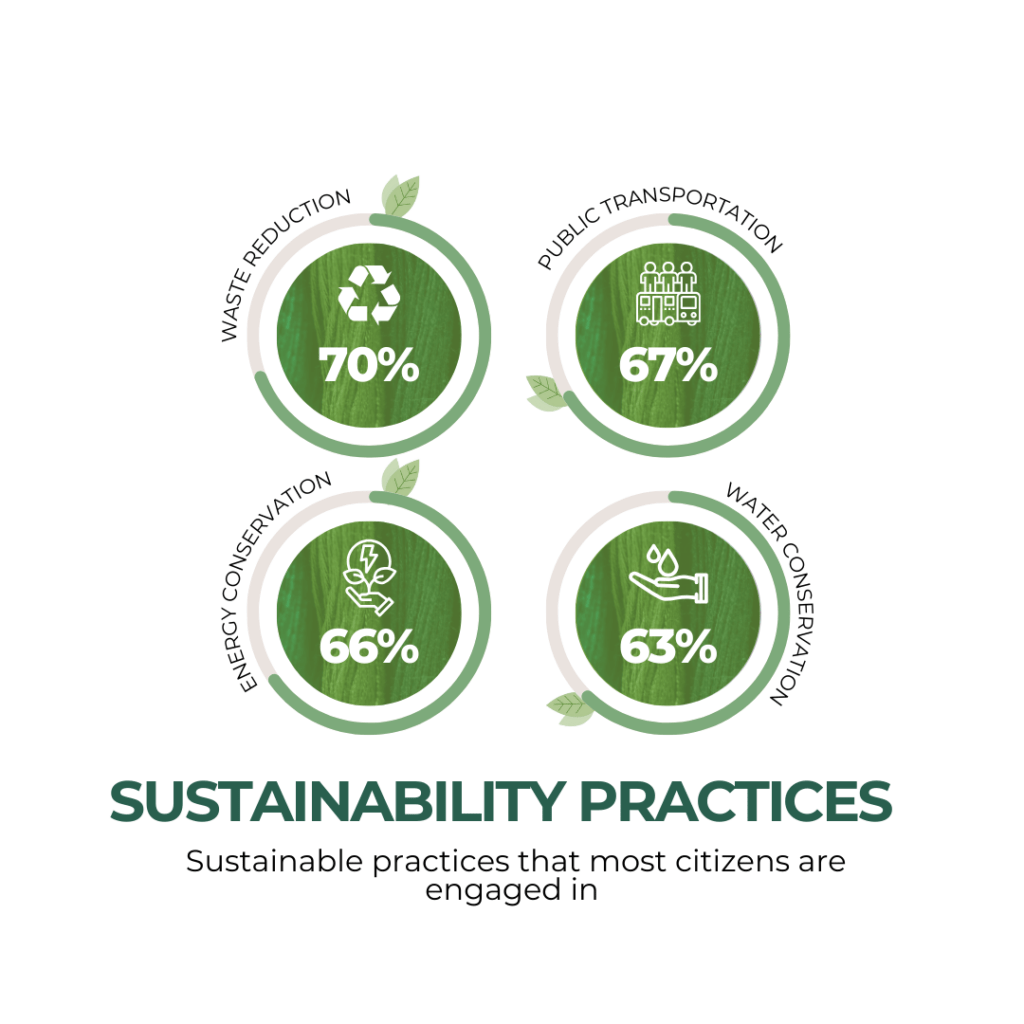
Step 5: Create a Sustainability Task Force
Form a dedicated team responsible for developing and implementing your sustainability strategy. This task force should be interdisciplinary, including members from various departments such as operations, marketing, and finance.
Step 6: Engage Stakeholders
Communicate your sustainability goals and strategies to all stakeholders, including employees, suppliers, investors, and customers. Engage them through workshops, newsletters, and regular updates to build support and enthusiasm for the initiative.
Step 7: Integrate Sustainability into Corporate Culture
Make sustainability a core part of your corporate culture. Train employees on sustainable practices and encourage them to contribute ideas for improving processes.
Step 8: Launch Pilot Projects
Test your sustainable practices with small-scale pilot projects. This will help you to identify potential challenges and make necessary adjustments before a full-scale rollout.
Step 9: Measure and Report Progress
Establish metrics to measure the impact of your sustainability initiatives. Regularly report these findings internally and externally to demonstrate progress and maintain transparency.
Step 10: Iterate and Expand
Use the insights gained from pilot projects and initial rollouts to refine your approach. Expand successful practices across the brand, continuously seeking ways to enhance your sustainability efforts.
Step 11: Market Your Sustainable Brand
Develop marketing campaigns that communicate your brand’s commitment to sustainability. Highlight the tangible benefits of your sustainable practices and how they contribute to the global effort of environmental conservation and social responsibility.
Step 12: Regularly Revisit and Revise Strategy
Sustainability is an evolving field. Regularly revisit and update your sustainability strategy to reflect new research findings, technological advancements, and shifts in consumer preferences.
Evaluating and Scaling Up: Optimizing Your Brand’s Sustainable Practices
A Strategic Framework for Assessing Effectiveness and Paving the Way for Expansion
This structured approach enables brands to evaluate and refine their sustainable practices critically. By measuring impact, understanding market dynamics, and leveraging stakeholder insights, brands can validate their efforts and identify opportunities to broaden their positive impact on the planet and society.
Step 1: Establish Key Performance Indicators (KPIs)
Identify clear, quantifiable KPIs that align with your sustainability goals. These could include metrics such as reductions in energy consumption, waste diversion rates, or the percentage of sustainable raw materials used in products.
Step 2: Conduct Ongoing Market Research
Continuously gather data on consumer perceptions and behaviors regarding sustainability. Use surveys, social listening, and sales data analysis tools to understand how your sustainable practices influence purchasing decisions.
Step 3: Monitor Sustainability Metrics
Regularly track your sustainability KPIs to measure the direct impact of your practices. This involves collecting data on resource usage, supply chain efficiency, and product lifecycle impacts.
Step 4: Analyze Customer Feedback
Evaluate feedback from customers regarding your sustainable products and policies. This can be sourced from product reviews, customer service interactions, and direct feedback channels.
Step 5: Review Supply Chain Operations
Assess the sustainability of your supply chain by conducting audits and reviews. Identify areas for improvement, such as reducing transportation emissions or enhancing packaging sustainability.
Step 6: Calculate Return on Investment (ROI)
Measure the financial performance of your sustainability initiatives to determine ROI. Consider both direct financial gains and indirect benefits, such as increased brand loyalty and risk mitigation.
Step 7: Compare Against Industry Benchmarks
Use industry benchmarks to see how your brand’s sustainability performance stacks up against competitors. This will help identify areas where you lead and where there is room for growth.
Step 8: Solicit Stakeholder Input
Engage with stakeholders—including employees, customers, and partners—to gather insights and suggestions for enhancing your sustainability practices.
Step 9: Develop a Scaling Strategy
Develop a strategy to scale up successful sustainability practices based on your evaluations. This could involve expanding initiatives company-wide, entering new markets, or increasing investment in sustainable technologies.
Step 10: Communicate Progress and Learnings
Share the outcomes of your sustainability assessments and your plans for expansion with all stakeholders. Be transparent about successes, challenges, and the steps you’re taking to improve continuously.
Step 11: Innovate and Diversify
Explore opportunities for innovation in your sustainability practices. Consider new products, services, or business models that could further enhance your sustainability impact.
Step 12: Reassess and Revise Objectives
Sustainability is dynamic; regularly reassess your goals and strategies to ensure they remain relevant and ambitious. Adjust your approach based on the latest research, technological advancements, and changes in consumer expectations.
Marks & Spencer: Setting New Standards in UK Retail with Comprehensive Sustainability Commitments
Marks & Spencer (M&S) is a prominent UK-based retailer known for its wide range of high-quality food, clothing, and home products. As a leader in the retail industry, M&S has long been synonymous with trust and quality, extending these values to its sustainability efforts.
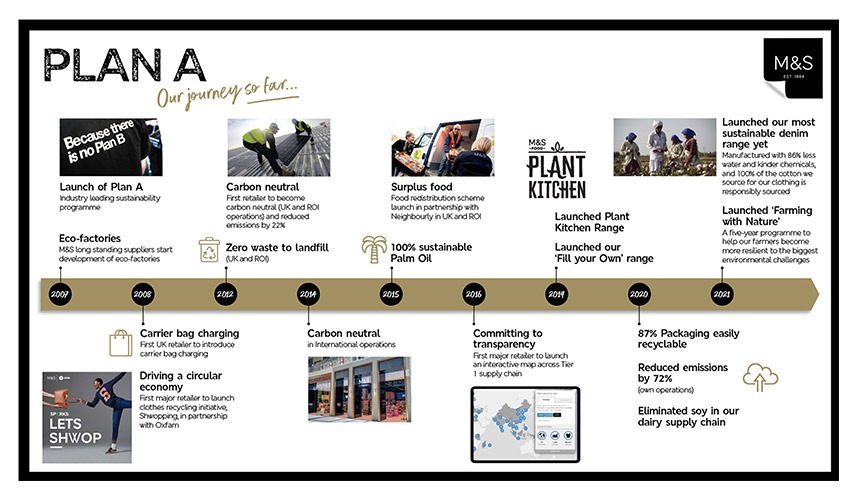
Sustainability Goals
- M&S is committed to becoming a net-zero business across its entire value chain by 2040, focusing on sustainable sourcing, reducing waste, and protecting resources.
- The company’s sustainability agenda, embedded in its "Plan A" program, aims to fundamentally change how M&S makes, moves, and sells its products.
Approach & Strategy
- Plan A Integration: M&S's sustainability strategy, Plan A, is fully integrated into its business model, ensuring that sustainability is considered in all aspects of its operations.
- Strategic Priorities: The brand's approach to sustainability is aligned with its strategic priorities, underpinning its aim to reshape M&S for sustainable growth.
Initiatives and Innovations
- Sustainable Sourcing: Achieved 100% responsibly sourced cotton and committed to 100% verified recycled polyester by 2025/26.
- Circular Economy: Enhancing clothing recycling schemes and aiming for all packaging to be recyclable by 2025/26.
- Low Impact Farming: Supporting farmers in growing low-carbon, responsible food and using fewer pesticides.
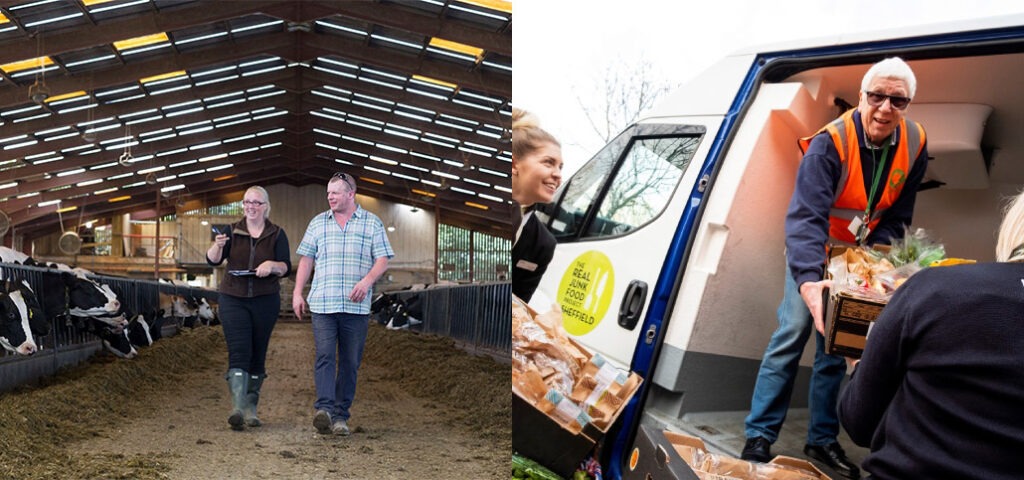
Stakeholder Engagement
- M&S engages deeply with various stakeholders, including suppliers, customers, and communities, to achieve its sustainability goals.
- Regular communication of sustainability efforts to customers, such as the "Look Behind the Label" campaign, encourages informed choices.
Execution
Implementation Process
- Raw Materials: Focuses on sustainable sourcing of key raw materials like soy, palm, cocoa, tea, and coffee.
- Property and Operations: Working towards zero emissions in property and transport, moving to low-carbon logistics and cleaner fuels.
- Introduced a Bring Your Own Bag initiative for click & collect orders, saving 10 million pieces of plastic annually
Challenges & Solutions
- Balancing quality and sustainability is a key challenge. M&S addresses this by embedding sustainability into the essence of its product quality.
Impact & Outcomes
Quantifiable Results
- Emissions Reduction: Committed to reducing emissions in line with the Science Based Targets initiative. 32% reduction in total location-based Scope 1 & Scope 2 GHG emissions. Cotton is used in Clothing and home products from more responsible sources: 100% in clothing and 90% in home products.
- Waste Reduction: Targets include reducing food waste by 50% by 2029/30 and removing 1 billion units of plastic packaging by 2027/28. 46% reduction in food waste and 93% of food plastic packaging is widely recyclable, with 0% operational waste to landfills.
Qualitative Benefits
- Enhanced customer trust and loyalty through transparent sustainability practices and high-quality, responsibly sourced products.
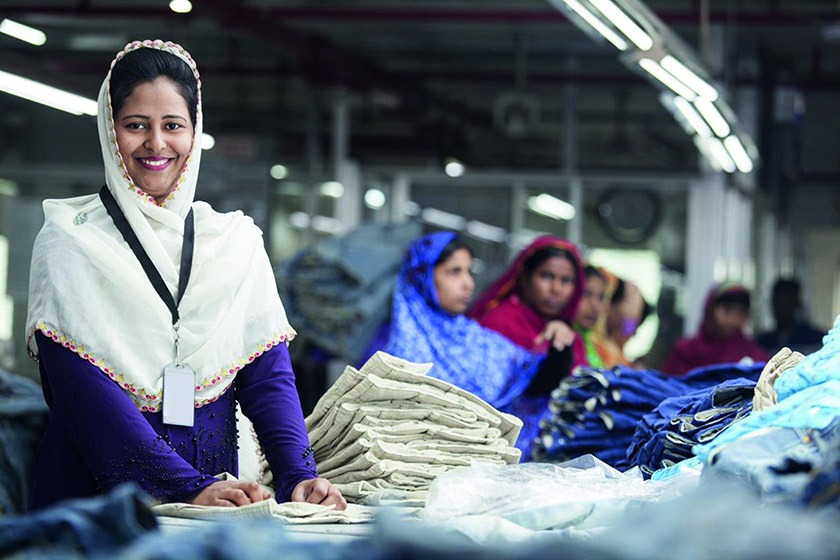
Awards & Recognition
- Huge on animal welfare and product standards, M&S ranks number one among retailers with the highest number of species within the M&S Food product range, adhering to RSPCA Assured certification.
- Recognized as the first national retailer to sell only slower-reared, higher-welfare fresh chicken.
Lessons Learned & Future Plans
Insights & Reflections
- M&S has learned the importance of integrating sustainability into every aspect of its business, from sourcing to sales.
- Continuous engagement with stakeholders and transparent communication are key to its sustainability agenda.
Forward-looking Strategies
- Future plans include increasing the range of plant-based proteins and driving efficiency across the store estate for more sustainable operations.
Sources / References
- Information for this case study was sourced from the Marks & Spencer 2023 Sustainability Report.

Sustainability Transformed: Shaping Tomorrow’s Legacy Today
We have traversed the vast and dynamic landscape of sustainability in business, uncovering the crucial intersections between ethical responsibility, consumer preferences, and commercial viability. We have spotlighted global trends, unveiled the power of brand transformation through sustainable practices, and laid out practical guides for action.
We have seen that sustainability is not just a trend but a profound business philosophy that, when integrated strategically, can catalyze innovation, open new markets, and build enduring customer loyalty. Leading with sustainability is no longer a choice but an imperative for brands looking to thrive in a future where the conscious consumer reigns supreme.
From understanding consumer preferences through meticulous research to harnessing emerging technologies for operational efficiency, this report has aimed to be the compass that guides brands toward a more sustainable and profitable horizon.
The journey towards sustainability is iterative and evolving. The leaders of tomorrow are the brands that dare to make sustainability the core of their identity today. They are the ones who will not only survive but flourish, creating a legacy that resonates with the values of future generations.
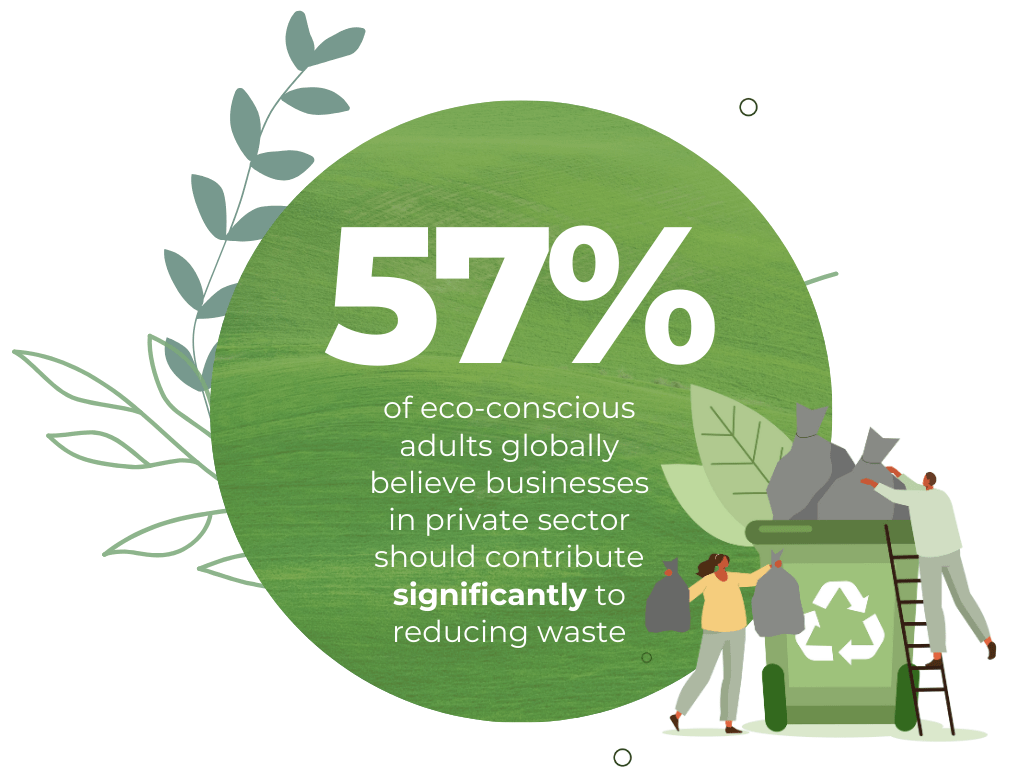
Fusing sustainability with business strategy is not just about being part of a global movement. It is about being at the forefront, driving change, and setting the benchmarks for others to aspire to. It is about being the brand that did not just do well but did good—reshaping the marketplace, one sustainable practice at a time.
The truth is: the natural world is changing. And we are totally dependent on that world. It provides our food, water and air. It is the most precious thing we have and we need to defend it.
Country Factsheets

Methodology
Objective: To understand adult perceptions and behaviors regarding sustainability in key regions.
This research report presents findings from a comprehensive study conducted by Kadence International, focusing on adult attitudes and actions concerning sustainability across diverse countries. Specifically, the study targeted adults aged 18 and older in the United States, the United Kingdom, and eight Asian countries: China, Japan, Singapore, India, Thailand, Indonesia, the Philippines, and Vietnam.
The study was designed to:
- Examine adults’ perceptions of their governments’ and fellow citizens’ efforts in addressing environmental issues.
- Quantify the priority of various environmental concerns among adults.
- Investigate the behavioral modifications adults undertake due to environmental concerns.
- Explore attitudes towards corporate roles in environmental issues and gauge interest in eco-friendly product alternatives.
This study employed a quantitative approach, leveraging survey data collection for systematic and analytical data gathering. A random sampling technique was utilized to select participants, ensuring a diverse and comprehensive sample reflective of each country’s demographic composition regarding age, gender, education level, and urban/rural residence.
Country-specific quotas were implemented to include an evenly distributed sample size across the different markets to allow for more cross-cultural analysis. The quotas were as follows: United States (n=350), United Kingdom (n=350), Singapore (n=250), China (n=300), Thailand (n=250), Philippines (n=250), Indonesia (n=250), India (n=250), Japan (n=250), and Vietnam (n=250).
Participants were qualified based on their acknowledgment of global warming and claimed understanding of sustainability, ranging from moderate to complete comprehension. The survey, conducted in July 2023 and lasting 15 minutes, was meticulously designed to cover various dimensions of sustainability. These included consumer perceptions, governmental efforts, environmental concerns, changes in behavior, corporate involvement, and preferences for eco-friendly products. Pre-testing of the survey instrument ensured its clarity and relevance to the research objectives.
Adopting a quantitative methodology was deliberate, facilitating systematic data collection across multiple variables. This approach allowed for statistical inferences and identifying trends in sustainability perceptions and behaviors among adults in the specified regions. Ethical considerations were paramount throughout the study, with informed consent obtained from all participants. Additionally, stringent measures were in place to protect data privacy, particularly when handling personal or sensitive information.
Sample: 2,750
WHO: Males and Females age 18+ from the US, UK, China, Japan, Singapore, India, Indonesia, Thailand, Vietnam, and the Philippines.
When: July 2023
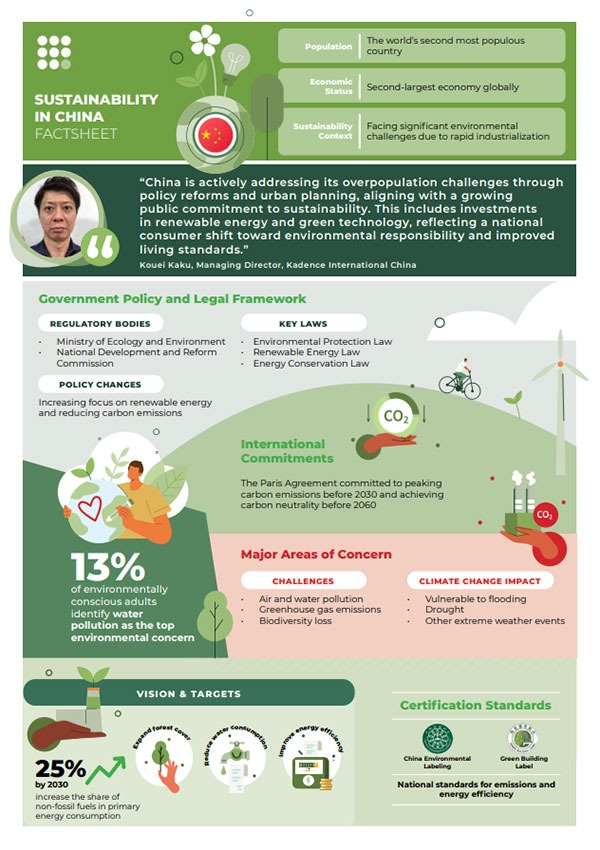
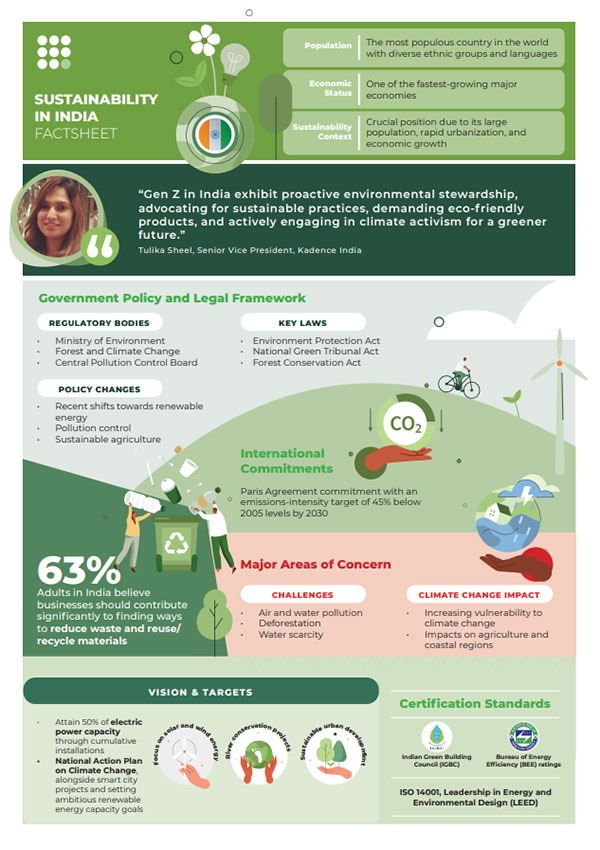



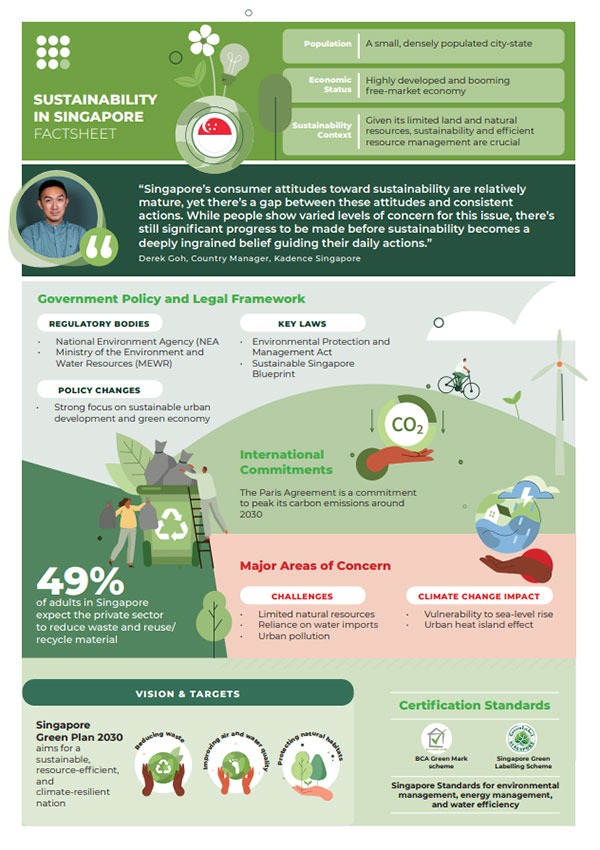
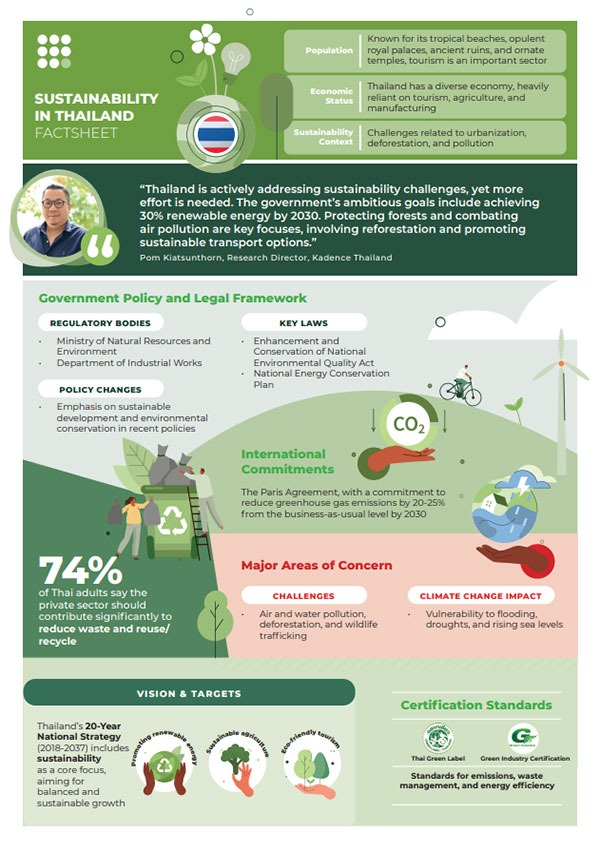

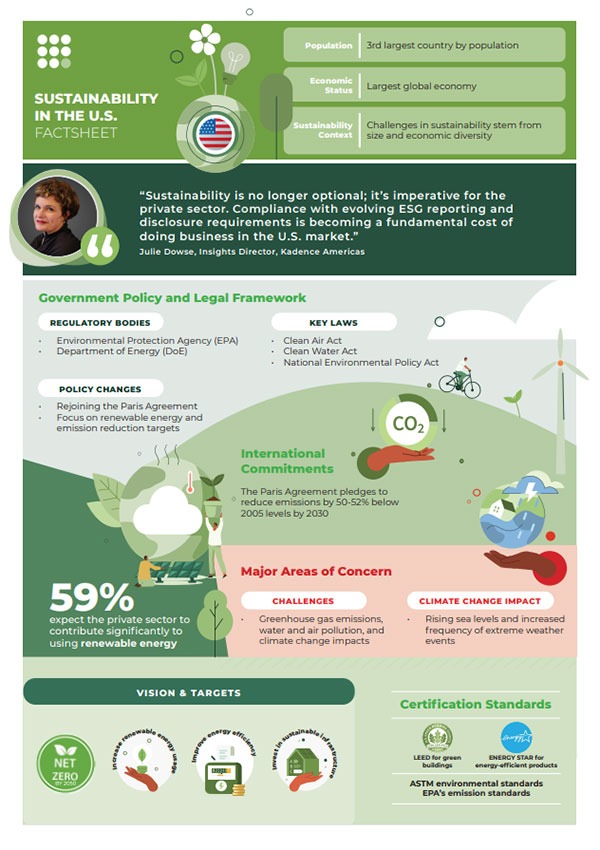





 Senior Marketing Executive
Senior Marketing Executive Sales & Marketing
Sales & Marketing General Manager PR -Internal Communications & Government Affairs
General Manager PR -Internal Communications & Government Affairs Vital Strategies
Vital Strategies
 Customer Intelligence Director
Customer Intelligence Director